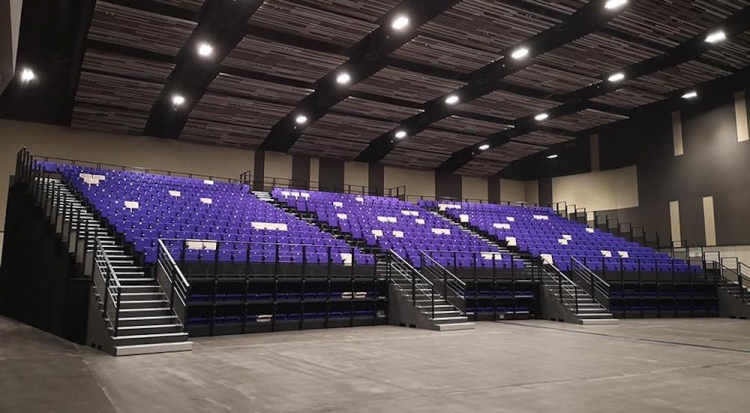Retractable Seating
One of the most important aspects that venue managers will have to consider is the seating. They may want to keep audiences further away from performers or they may need to reduce the capacity of the hall.
Movable and retractable stands are ideal in this situation as you can fold up the front rows or move the stand further back in the room to allow more space between the seats and the stage. You may even want to retract your stand fully and put free-standing chairs in the space instead.
Modular retractable seating systems also work well as they give you the flexibility to add more seating to a room and change the configuration so that you can allow more space between audience members while retaining the same size of crowd. Seating blocks can also be removed to make the capacity smaller if required by regulations. Standing venues may bring in modular seating to allow more control of social distancing between spectators. Automated, remote-controlled systems make it quick and easy to move seating stands without staff members having to put themselves at any risk.
Social Distancing
Seat numbers, and pre-booking allocated seats, will become essential to make it very clear to spectators where they need to sit for safety purposes. Simple, but effective innovations such as seat covers will help avoid any confusion by blocking off seats to allow the specified social distance between individuals. These covers can fit any seat size or shape and stop the seat from being unfolded. There is no need to compromise on the appearance of the venue as they can be supplied in a wide range of colours and even embroidered to add a special touch of customisation. As an alternative, some venues have introduced partitions between groups.
Audience Safety
Cleaning regimes will have to be enhanced and staff trained in the new procedures. Not only that but audiences will need to be reassured that these plans are in place so they can enjoy the event without any concerns.
While it will be relatively straight forward to control queuing at the start of an event, with staggered arrivals and small numbers being allowed to trickle in, half time or interval and the end of a match or performance will have to be managed carefully to avoid crowds. A surge of people jostling towards the exits is not in anyone’s interests, and a controlled schedule will need to be carefully communicated. Large venues that can host more than one event at a time will have staggered start and finish times to avoid overcrowding.
With safety precautions in place, it is hoped that audiences will soon be able to enjoy an outing to the theater or to support their favorite team.











 © 2025 All rights reserved.
© 2025 All rights reserved.